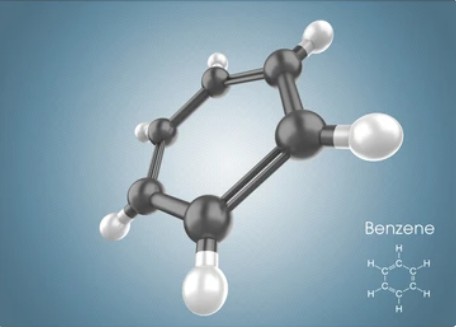- Home
- About Us
- Products
- Services
- Recommendation
- Industries
- Resource
- Order Center
- Contact Us
Benzene, a colorless liquid with a distinct odor, is an important aromatic hydrocarbon widely used in various industries. Its molecular formula is C6H6, consisting of a ring of six carbon atoms with alternating single and double bonds. The unique structure of benzene has fascinated scientists for centuries due to its stability and significant chemical reactivity. Here, we will delve into the oxidation mechanism and reactions of benzene, examining their implications in the field of chemistry.

The oxidation of benzene can occur via different mechanisms, depending on the oxidizing agent and reaction conditions. Here, we will discuss the mechanism of benzene oxidation using a strong oxidizing agent such as chromic acid (H2CrO4).
1. Initial formation of the electrophile: The chromic acid (H2CrO4) dissociates in water to form chromate(VI) ion (CrO42-). This chromate ion can act as an electrophile and attacks the benzene ring, forming a cyclic intermediate called a arenium ion or σ-complex.
2. Resonance stabilization: The arenium ion is not a stable species due to the positive charge on the carbon atom, but it can be stabilized through resonance. The positive charge delocalizes around the benzene ring, resulting in a resonance-stabilized intermediate.
3. Rearrangement: In some cases, the arenium ion may undergo a rearrangement to form a more stable carbocation intermediate. This rearrangement occurs through a migration of a hydrogen atom or alkyl group from an adjacent carbon to the carbon bearing the positive charge.
4. Attack by nucleophile: In the presence of a nucleophile, such as water (H2O), the carbocation intermediate reacts with the nucleophile to form an alcohol. The nucleophile attacks the carbocation, forming a new carbon-oxygen bond and restoring the aromaticity of the benzene ring.
Overall, this mechanism involves the formation of an electrophile, the attack of the electrophile on the benzene ring, stabilization of the intermediate through resonance, rearrangement of the intermediate if necessary, and finally, the attack of a nucleophile to form the desired product.
The oxidation reaction of benzene can proceed in various ways, yielding different products. Here are three commonly observed oxidation reactions of benzene.
1. Benzene to Phenol
In the presence of a strong oxidizing agent such as chromic acid (H2CrO4) or potassium permanganate (KMnO4), benzene can be oxidized to phenol (C6H5OH). The reaction proceeds as follows:
C6H6 + [O] → C6H5OH
2. Benzene to Benzoic Acid
Under more vigorous oxidation conditions using a more powerful oxidizing agent like nitric acid (HNO3), benzene can be fully oxidized to benzoic acid (C6H5COOH). The reaction is represented as:
C6H6 + 3[O] → C6H5COOH + H2O
3. Benzene to Maleic Anhydride
When benzene is heated with a mixture of air and a catalyst, such as vanadium pentoxide (V2O5), it can undergo partial oxidation to form maleic anhydride (C4H2O3). The reaction proceeds as follows:
C6H6 + 3.5[O] → C4H2O3 + 3H2O
These oxidation reactions are important in organic chemistry and are used to convert benzene into more reactive or functionalized compounds.
Privacy Policy | Cookie Policy | Copyright © 2025 Alfa Chemistry. All rights reserved.
Back to top